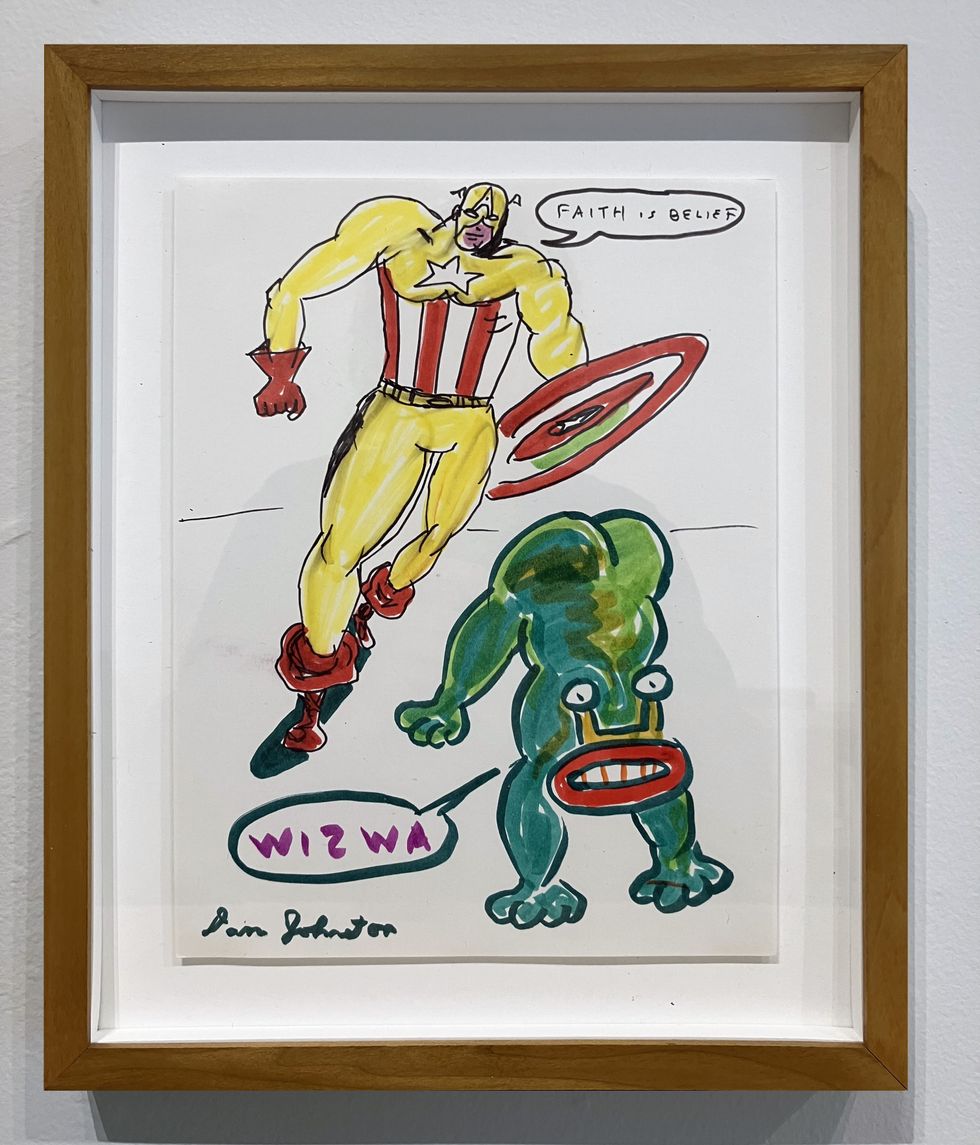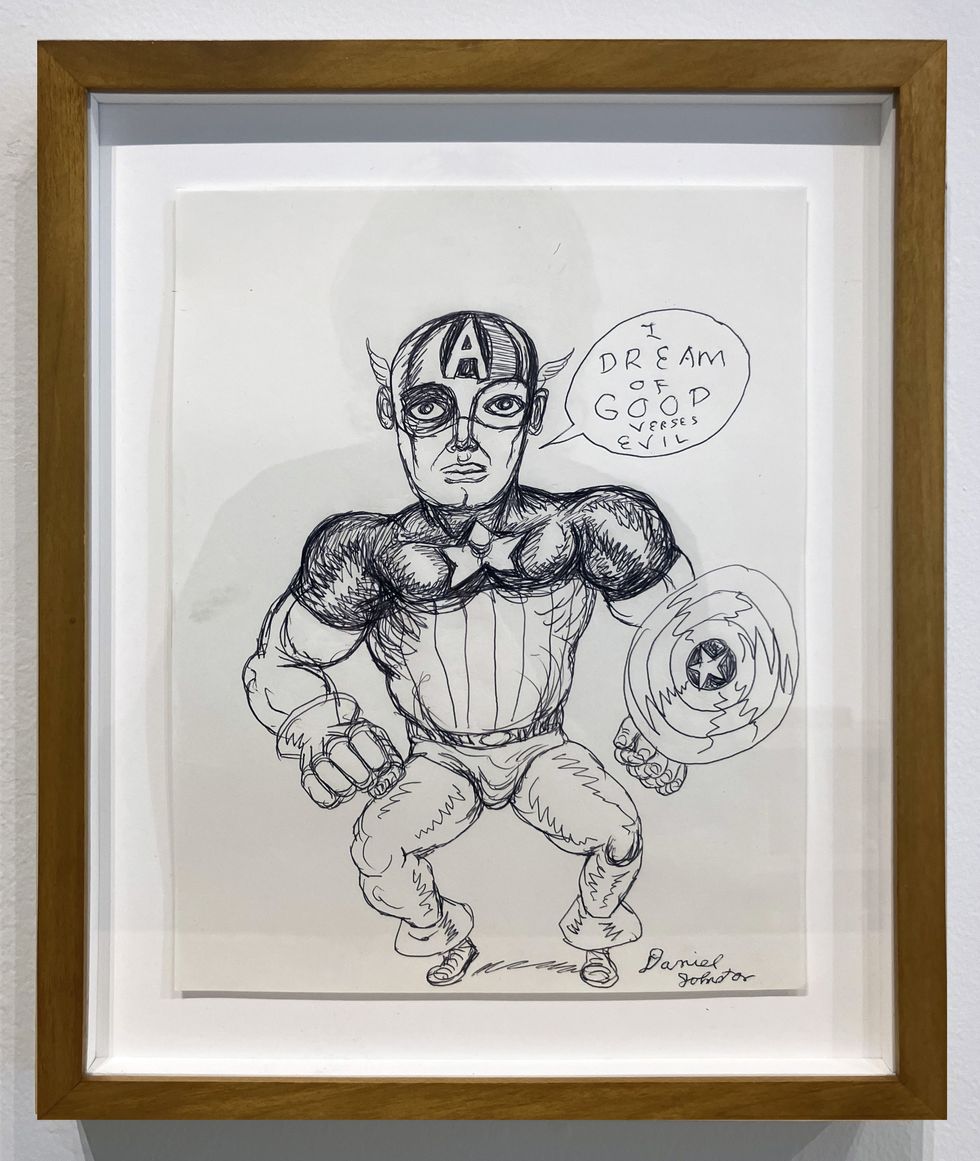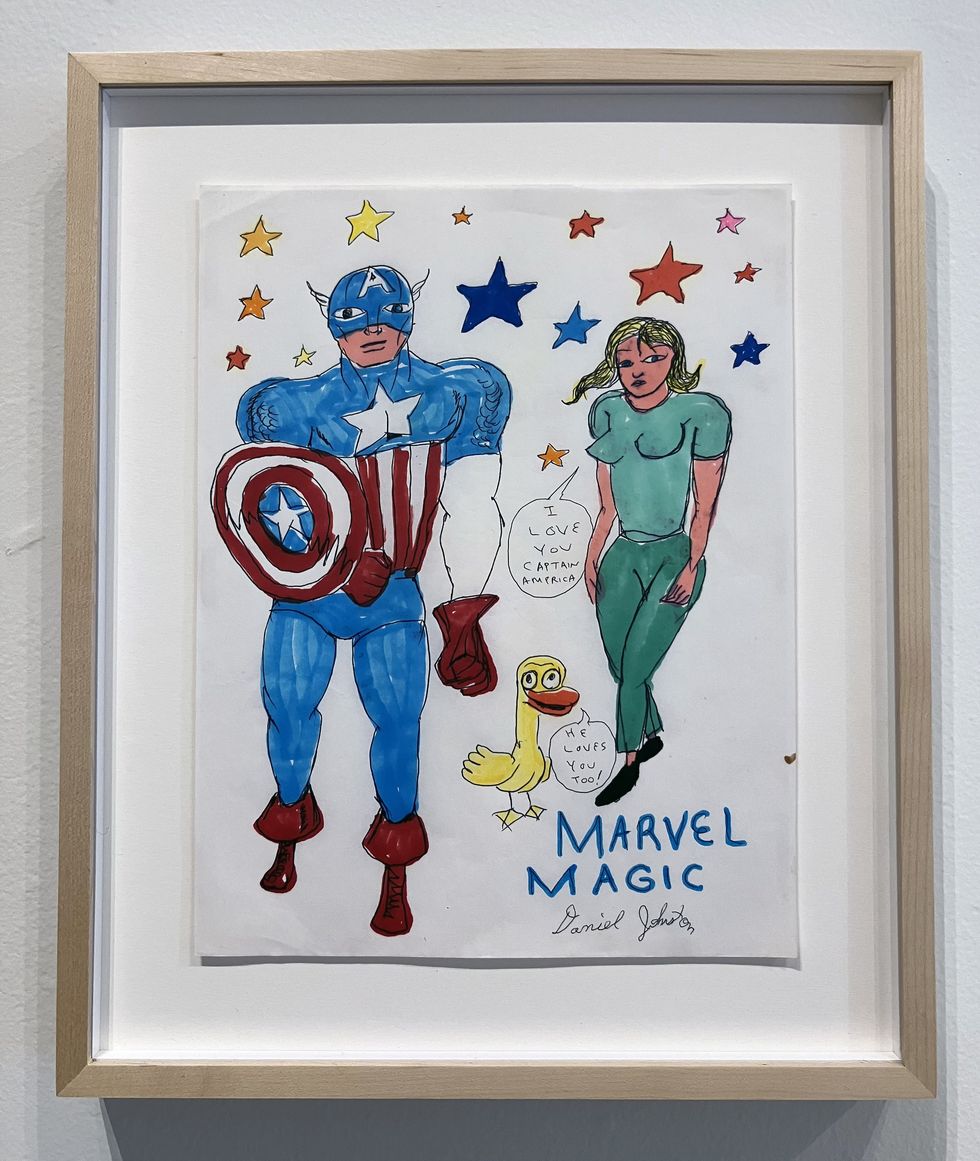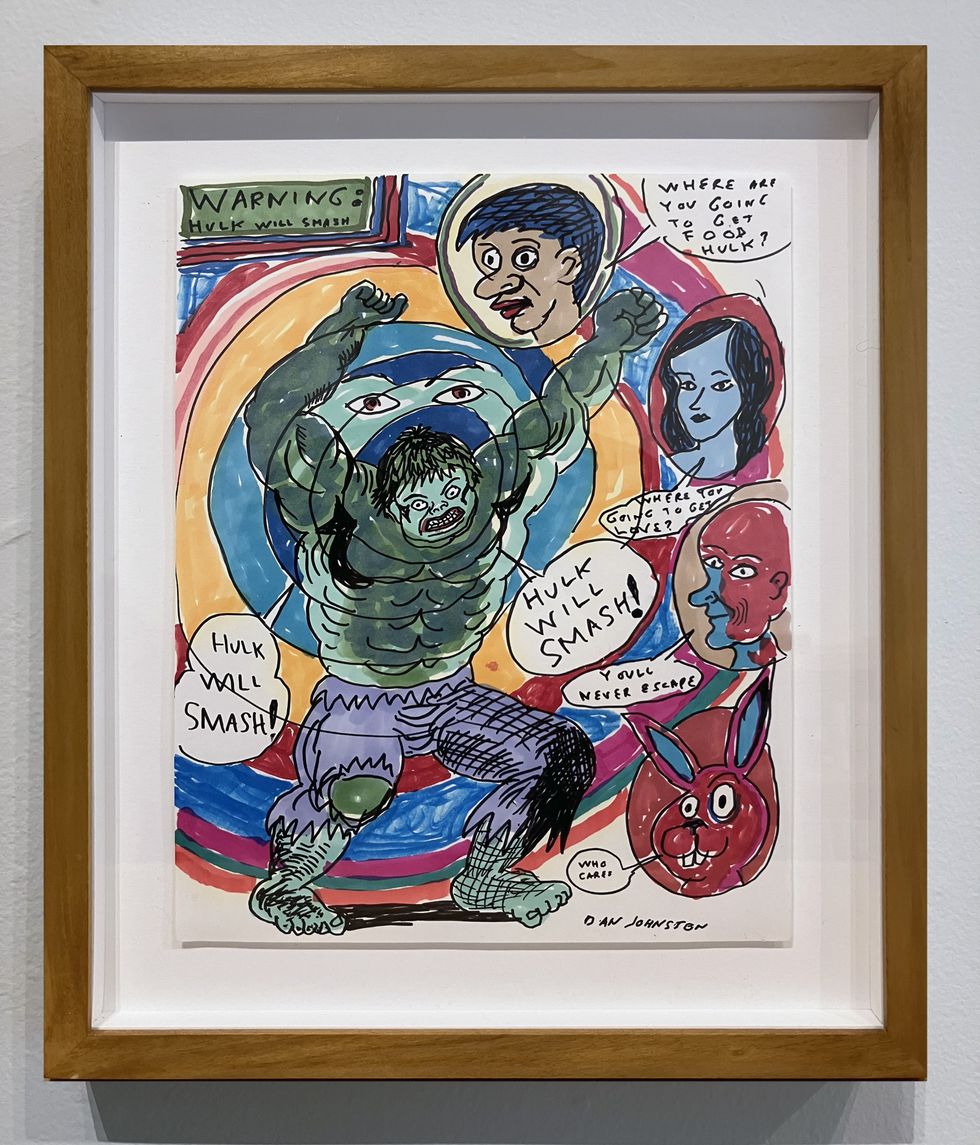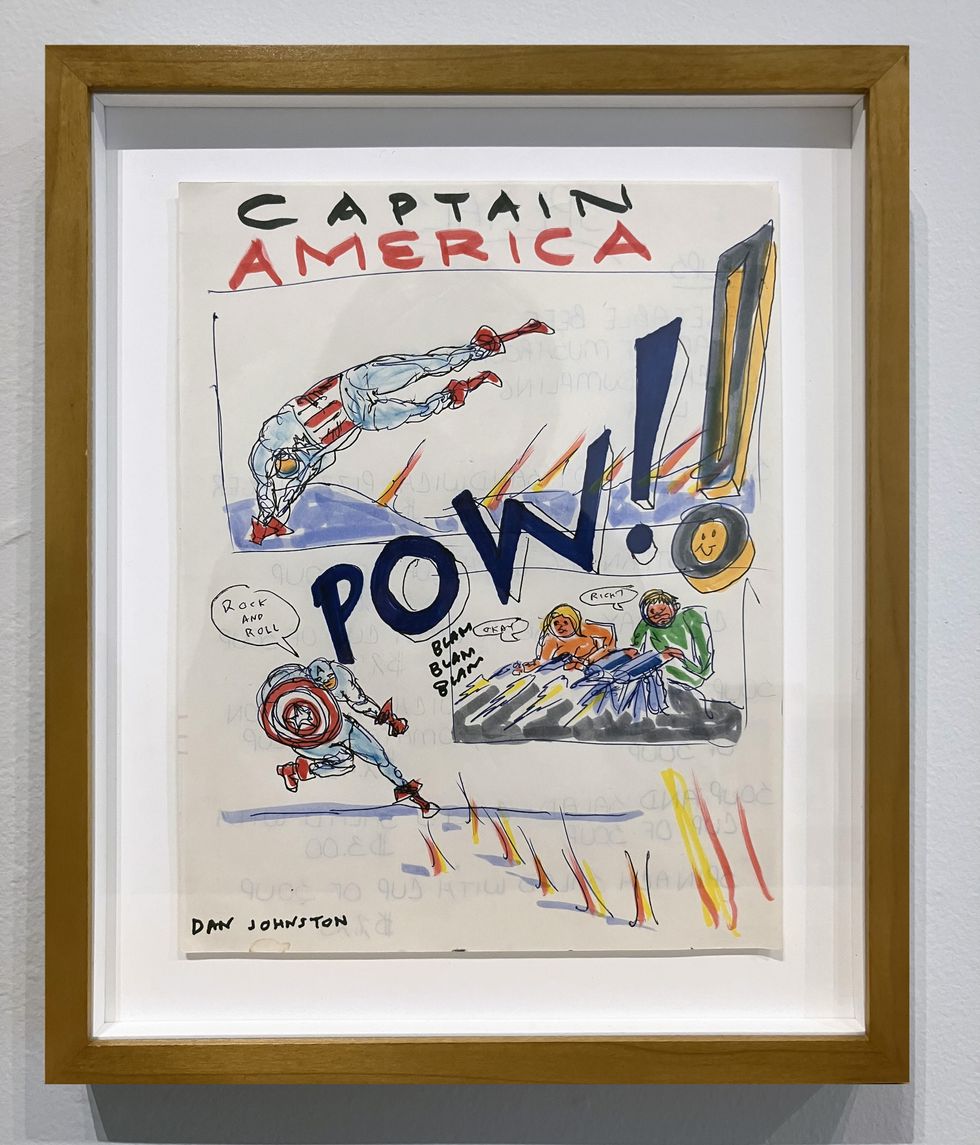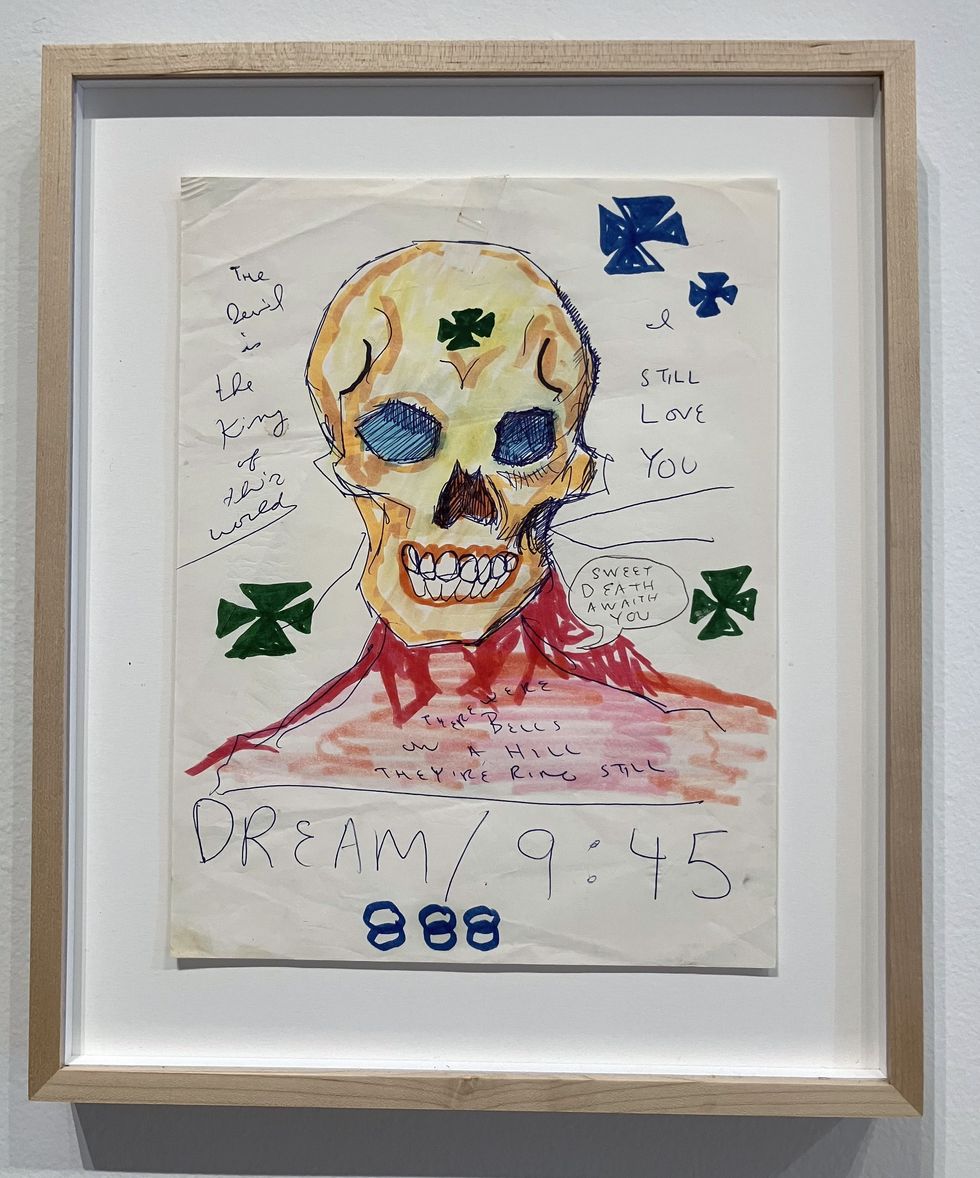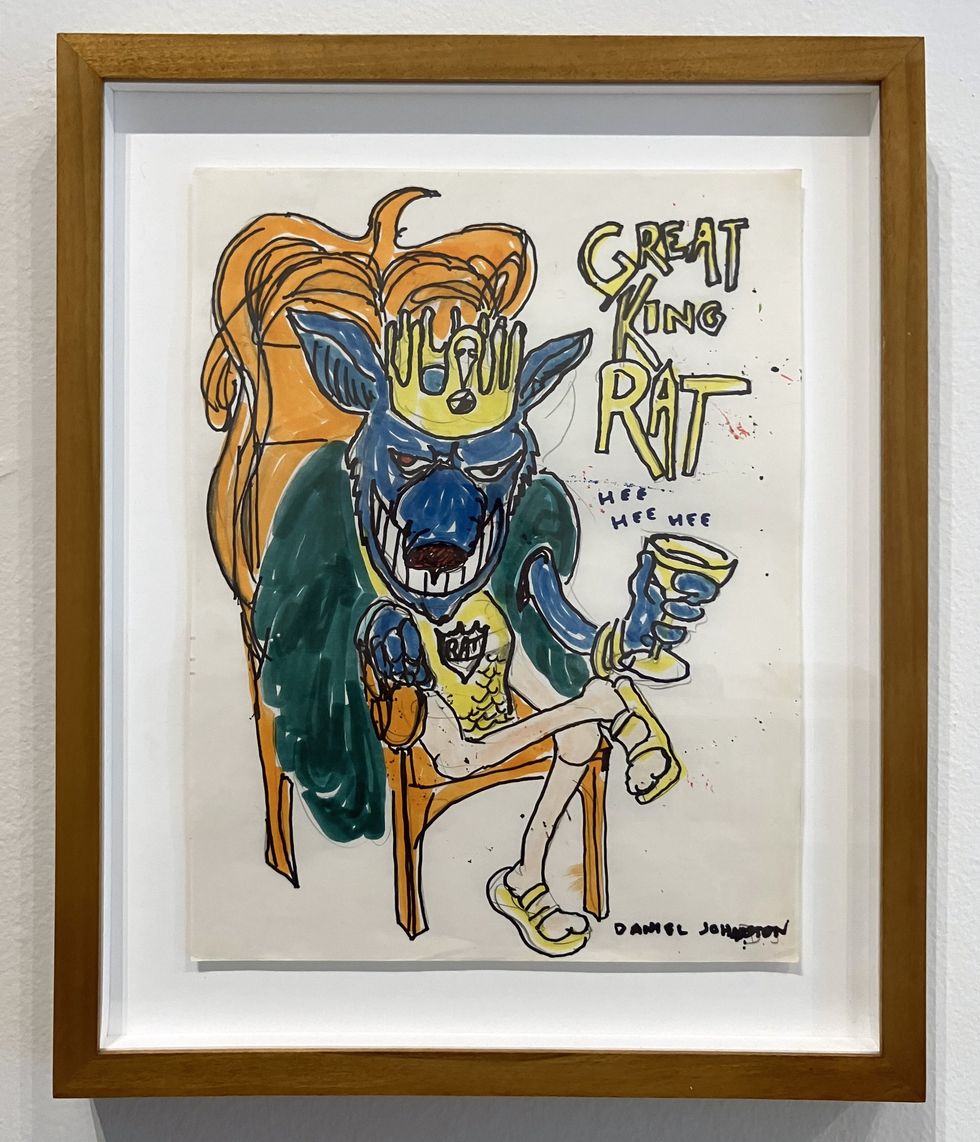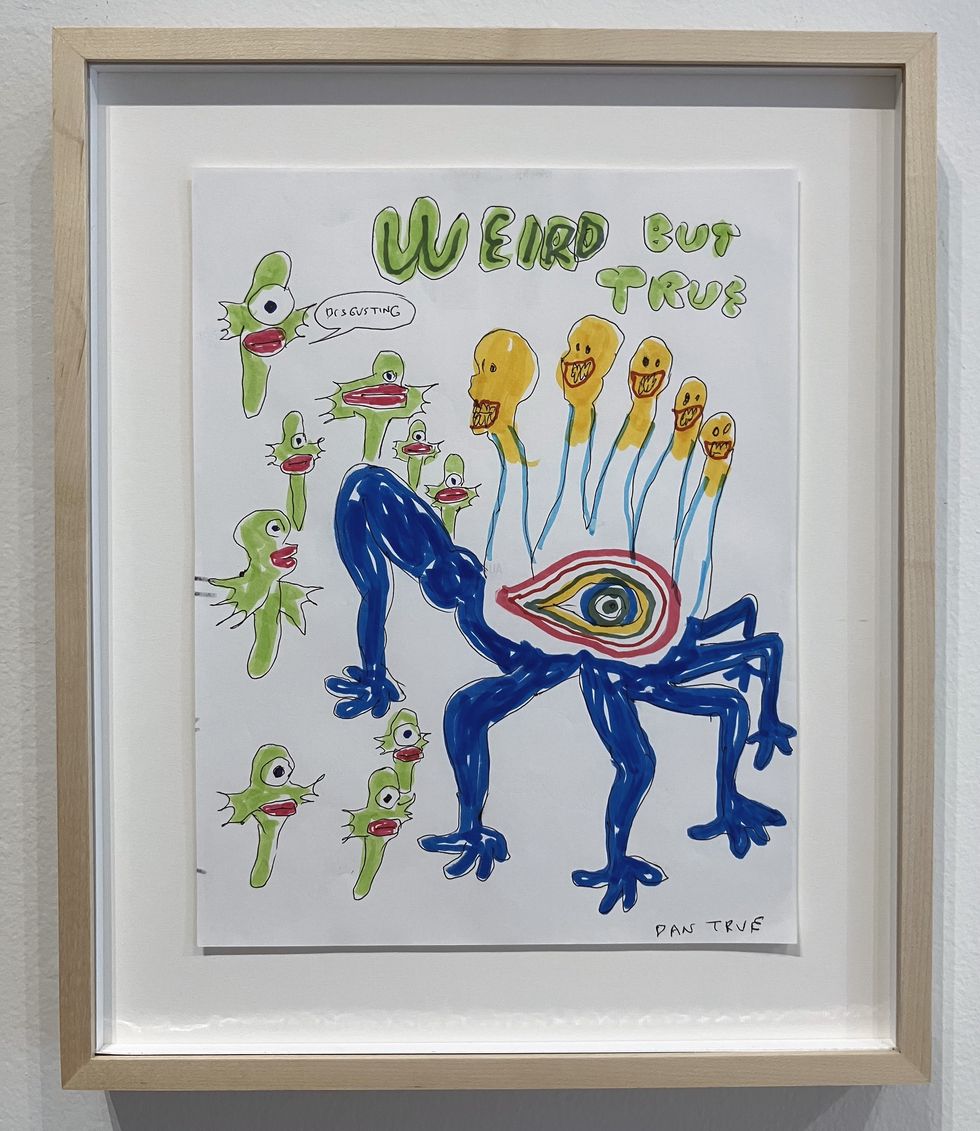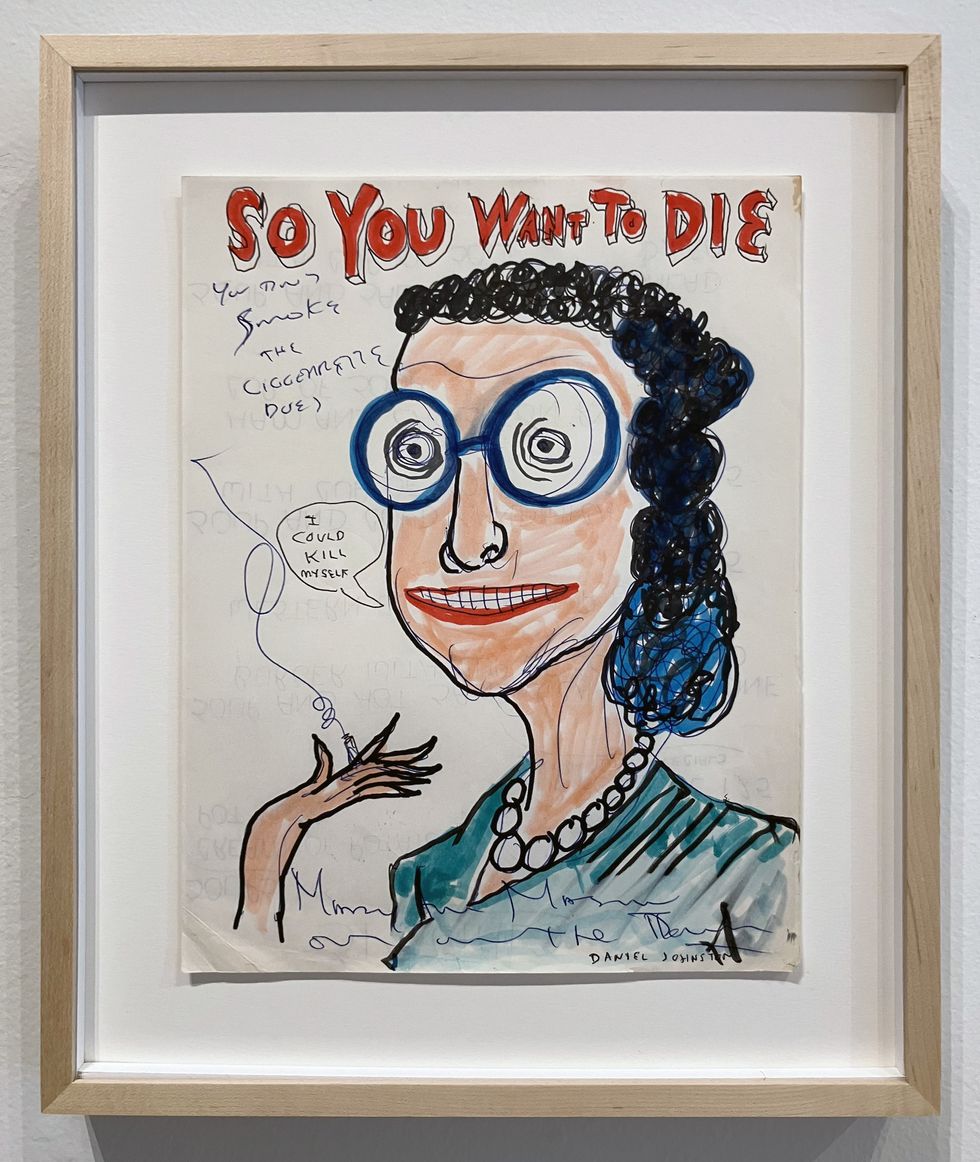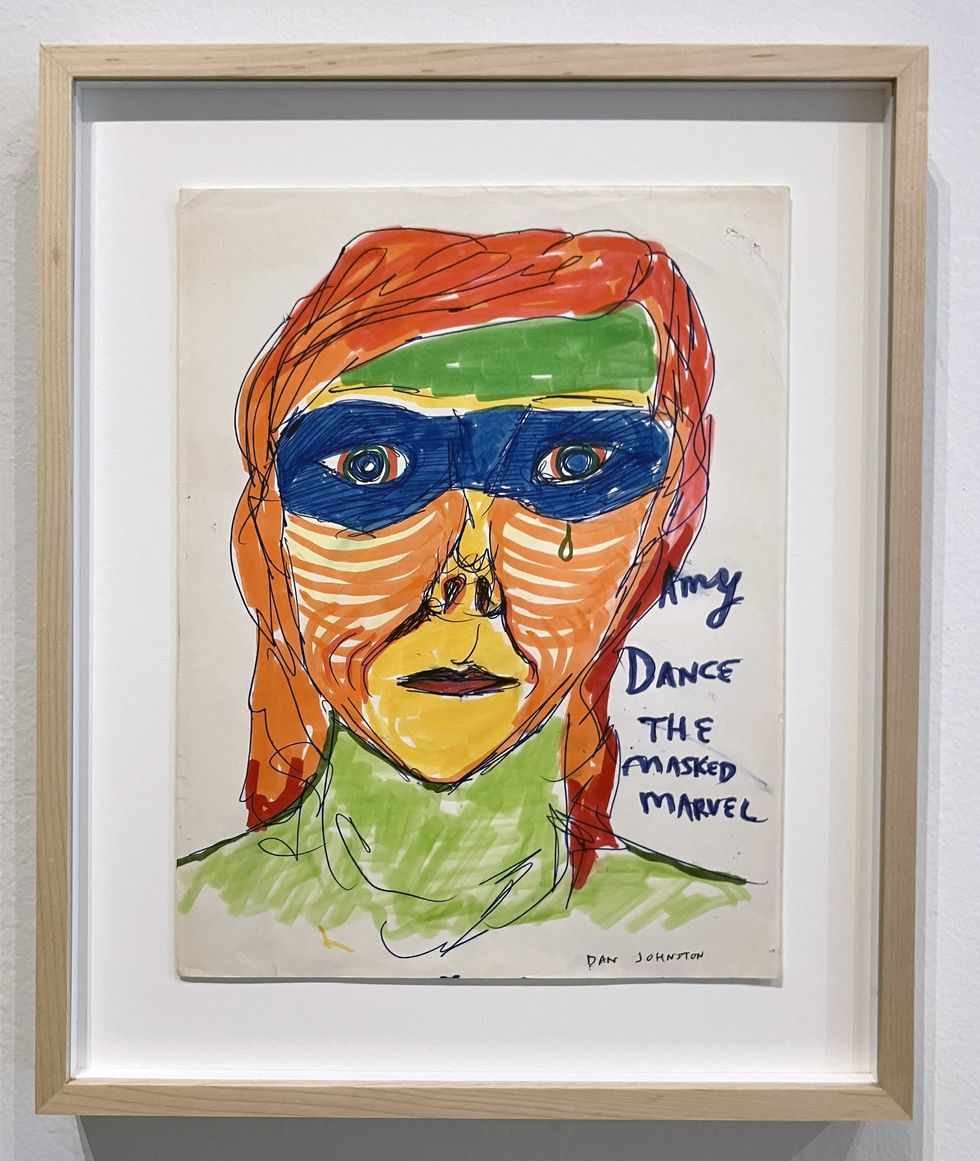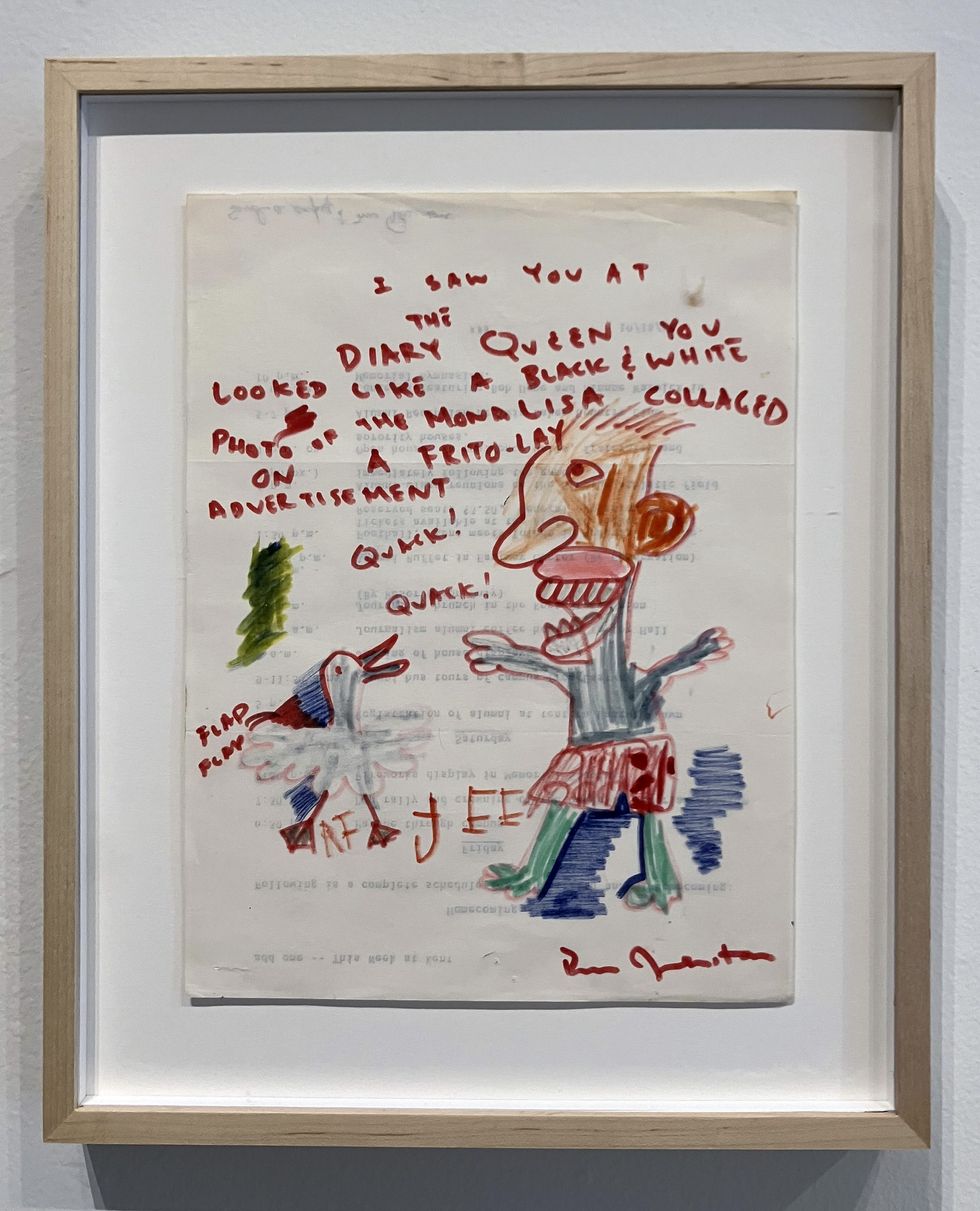The Humor and Hell of Daniel Johnston’s Art
Exploring the artist's legacy for Mental Health Awareness Month.
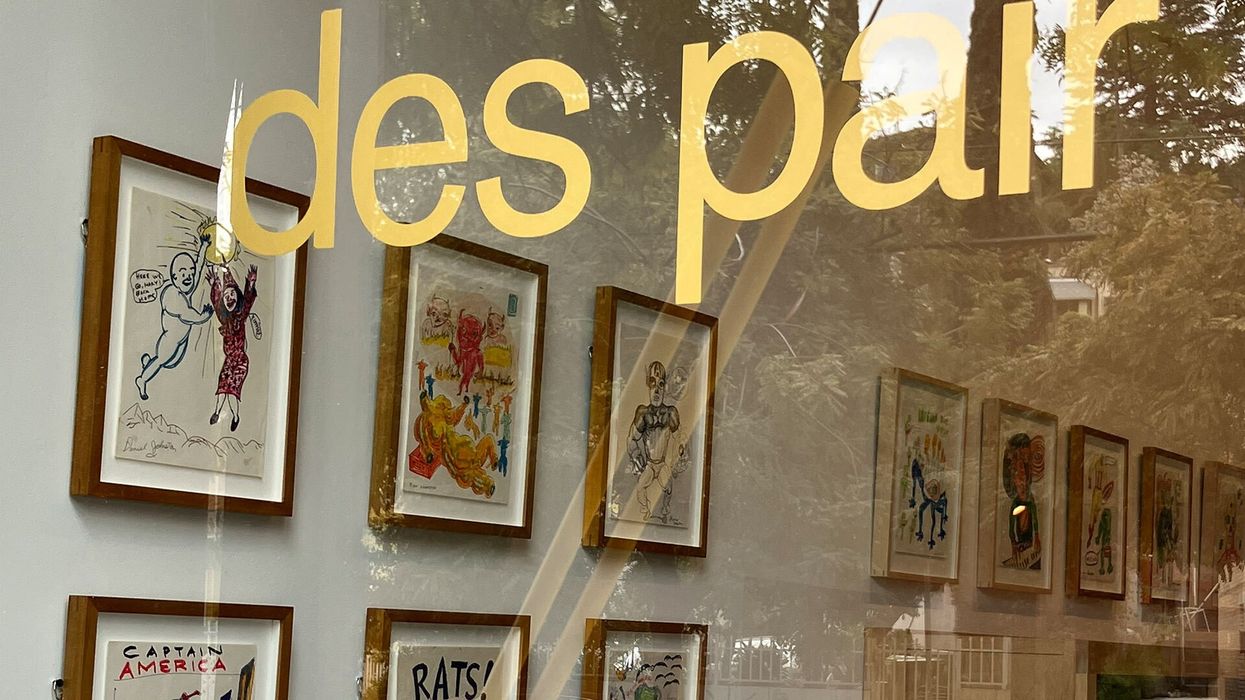
“I dream of good versus evil,” says Captain America in a loosely penned speech bubble. Daniel Johnston’s drawings often play in the cartoonish realm of religious anxiety and existential humor. As a musician and visual artist who battled manic depression, Johnston’s artwork mirrors his nuanced inner world with a variety of recurring characters. From the devil to the Hulk to a duck driving a car, these characters became the ensemble cast of Johnston’s multiverse. Relatable, heartbreaking, and often self-reflexively funny, his drawings are incredibly intimate pieces of his legacy.
From David Bowie to Harmony Korine to Lana del Rey, Johnston’s work is beloved by generations of influential artists. After his start in the ‘80s passing out homemade cassettes at a McDonald’s in Austin, Texas, he has achieved a cult status in the music scene. His lo-fi style, emotional rawness, and incredible sincerity made him something of a “musician’s musician” and he was catapulted to notoriety after Kurt Cobain wore a T-shirt featuring the artwork from his 1983 cassette. (You know the frog drawing when you see it.) While Johnston is often described as an “outsider artist” with a “childlike style,” these labels often do a disservice to the agency in his creative output and ambition to share his art with the world. His battle with manic depression often took centerstage, overshadowing the fact that he was an artist with mental illness—not a mentally ill person who made art.
For both his longtime followers and newcomers to his work, Los Angeles bookstore “des pair” is showing a gallery exhibition of Johnston’s archival drawings from the ‘80s. In collaboration with Lee Foster of Electric Lady Studios who works closely with Johnston’s estate, this is a rare opportunity to see his work up-close-and-personal. With artworks that have been displayed in galleries internationally including the 2006 Whitney Biennial, the show titled The love of nothing is something is on view until July 16th, 2023. Sitting down with des pair owner Addison Richley, we had a meandering conversation on Johnston’s world building, battles with mental illness, and his unique mark on the art world.

Photos: Courtesy of des pair books
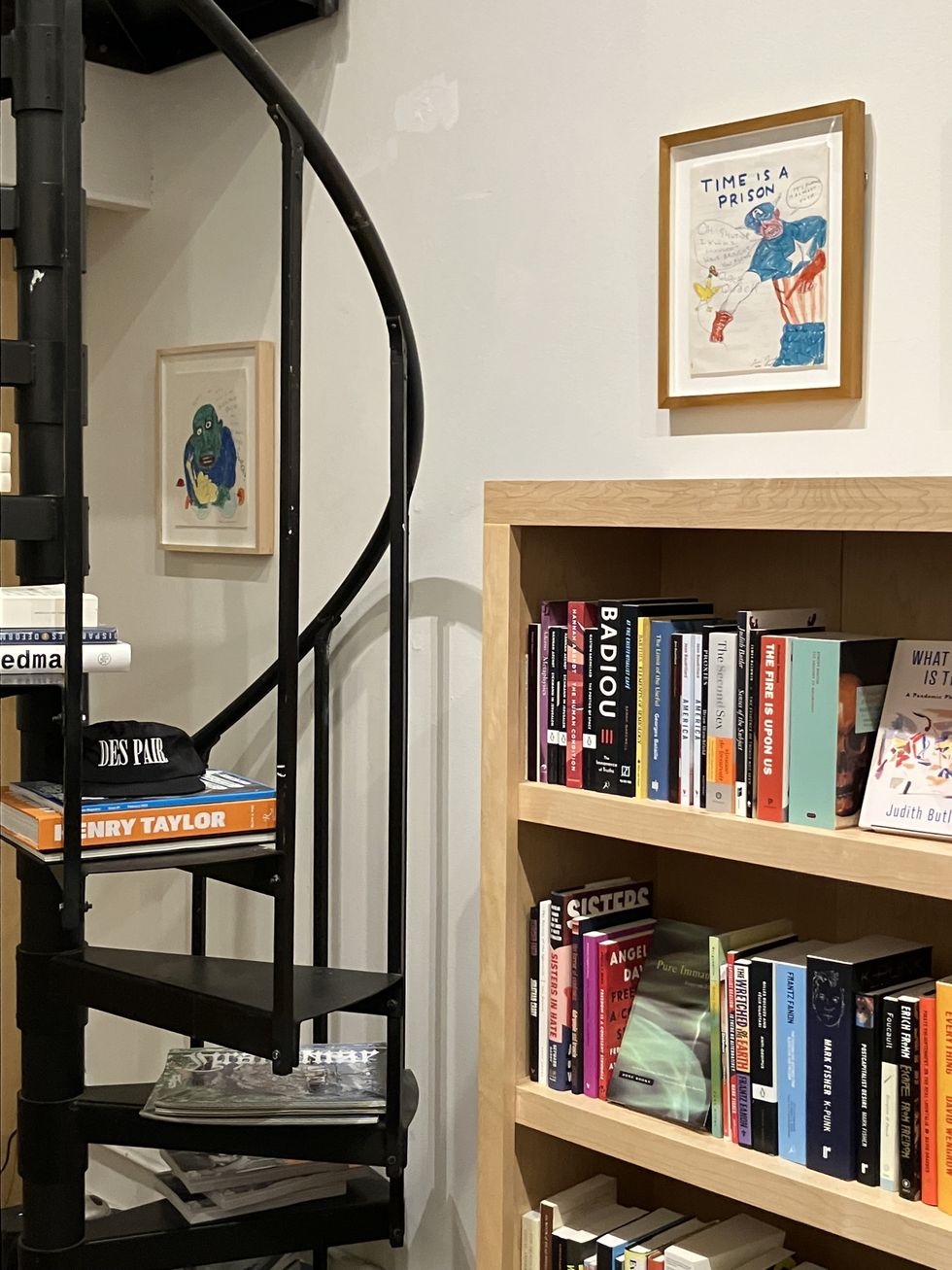
Why is this show a good pairing with des pair?
In Johnston’s world, there are recurring characters and motifs. Everything from the duck to the devil to the Hulk. How would you describe the world he creates in his artwork to somebody that does not know much about his work?
“Like many of us, Johnston had his own idols. He was super influenced by the Beatles, so Paul McCartney shows up a lot. He has these recurring characters like the duck, the frog, and a lot of Marvel characters. His creativity was so expansive that he combined fictionalized characters with living beings because, to him, it didn’t matter. They all meant something of equal importance. His mental illness, for better or for worse, really translates through these drawings and that's why I feel such a range of emotions when I look at them. I think that's a big part of his influence on people–his acceptance that there's so much sadness in the world, and still choosing to find the sweet silver lining.”
In Johnston’s universe, you have these weighty themes of the devil and God, salvation and damnation, all alongside Captain America and Paul McCartney. Which is your favorite character in his universe? And which one is your favorite piece?
“I love the duck because he has this knowing expression where he’s almost judging you. There’s something in his face that seems so self-assured. It’s funny in contrast with Captain America who always seems incredibly distressed. My favorite drawing is this one right here [gestures behind her]. It says, ‘Funny as it seems, life is but a dream.’ The duck is driving on a road from nowhere to nowhere and he just looks so content. It makes me laugh but it's also a bit fatalistic—maybe there's nothingness, but there's so much acceptance.”
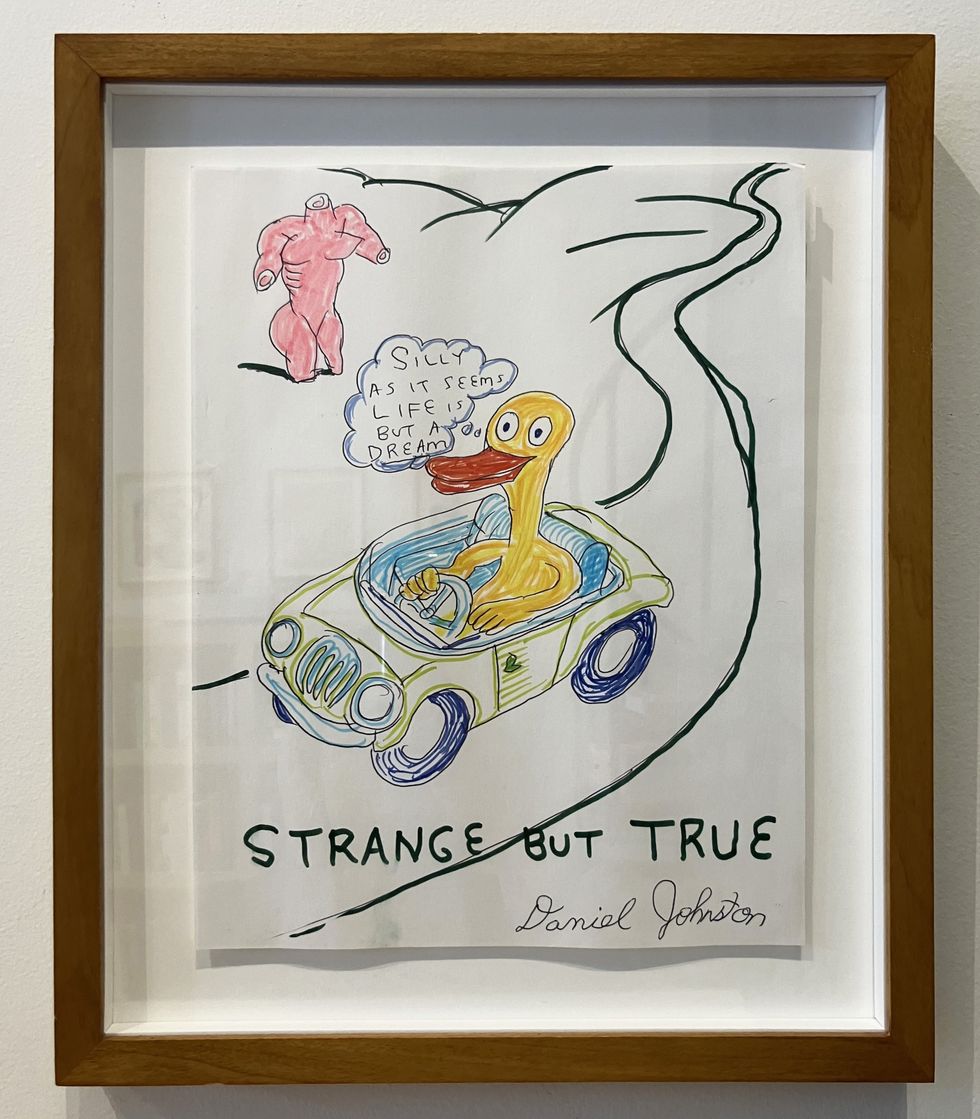
Strange But True, 1997
Ink and marker on paper 11 x 8 1/2” inches
The way he became famous was so unusual but people were always drawn to him. He was so sincere without being cloying. In your opinion, what about him resonates with so many people?
“I feel like it's hard to find someone so authentically themselves in today's world. People resonate with the freedom he had of putting pen to paper and making music in an uninhibited way. Even when record stores in Austin started selling his records, he was still walking around and just handing out cassettes for free. He joined the Carnival for five months, and then ended up in Austin on a whim. Maybe it was his hopefulness that people connected to. He was also incredibly tortured, and I think a lot of people dealing with mental illness can relate. In a way, he’s a sign of hope because he put out so much beauty during those dark times.”
For some reason if another artist did what Johnston did—joining a carnival, selling tapes out of McDonalds, making lo-fi music— it would feel so phony and postured. Do you think it’s his lack of pretense that makes him so appealing?
“I really appreciate his confidence in imperfection. Someone said he definitely wasn't the greatest musician in the world, and he’s not the best artist in the world, but there's this sort of confidence in who he is. I think people are drawn to that quality because it’s so hard to find that within yourself.”
A lot of his work uses comic book superhero imagery, do you see Johnston as a quintessentially American artist?
“I feel like it does him an injustice to put him in a box like that. There’s one work that says ‘Kill a Famous Person, and You'll be Famous Too,’ and that actually feels more American than any of the Marvel characters. I don't think his intent was ever making political commentary, it was all just a means for him to better understand his own life. I think anyone can relate to that, not just the American person.”
The press release states that Johnston, “triumphed over his mental illness through his prolific output of art and songs.” How do you see this ongoing conversation between his mental illness and his work?
“I think the word ‘triumph’ was an attempt at a positive spin in the press release, because he clearly did suffer. As someone who also struggles with depression, I don't really think it's ever a goal of overcoming it, more a matter of coping. Asking yourself, ‘How do I make it a little better?’ I don't think that he ever found an answer, but in each drawing, you can see how he's working through what is troubling him. A few of them are really dark, like the one that says, ‘It is here, you'll wait for eternal punishment.’ It’s dark but very funny in its self-awareness. Or the reoccurring Casper [the friendly ghost], who looks like a naked baby telling a crowd that the world is ending. It’s a perfect balance of melancholic and hopeful, which is always the sweet spot. I appreciate the humor in some of these heavier drawings.”
What do you see as his kind of legacy in the art world and in the music world also?
“He’s often categorized as an ‘outsider artist’ or ‘folk artist.’ I feel like these drawings, as simple as they are, are loaded with emotion. There's also a lightheartedness that is incredibly needed in the art world—he's such a breath of fresh air in that way. Conversely, in the music world, his songs are so much heavier. His mediums sort of balance each other in a way. There’s beauty in both, but he's almost his own genre. He's so welcomed and loved by such a range of musicians and artists.”
What has been the reception to the show so far?
“I feel like every day I'm learning of more musicians who are directly influenced or inspired by his music. Even with the opening, I was honestly expecting sort of a hot dad, older crowd, and it was a shockingly young crowd. Most of the people were probably in their twenties, and I realized, ‘Of course, he's continuing to inspire new generations.’”
What has been the reaction of people stopping by?
“When people come in there is a visceral response for a lot of them. Even people unfamiliar with his work are moved by what they see. I feel almost uncomfortable being here when I can tell they’re having such a personal moment. I wish I could say, ‘Oh, let me give you a minute with the work.’ It’s interesting that we're in LA because a lot of musicians have come through. Even Jeff Feuerzeig, the director of The Devil and Daniel Johnston (2005), came to visit and had a lot of stories to share.”
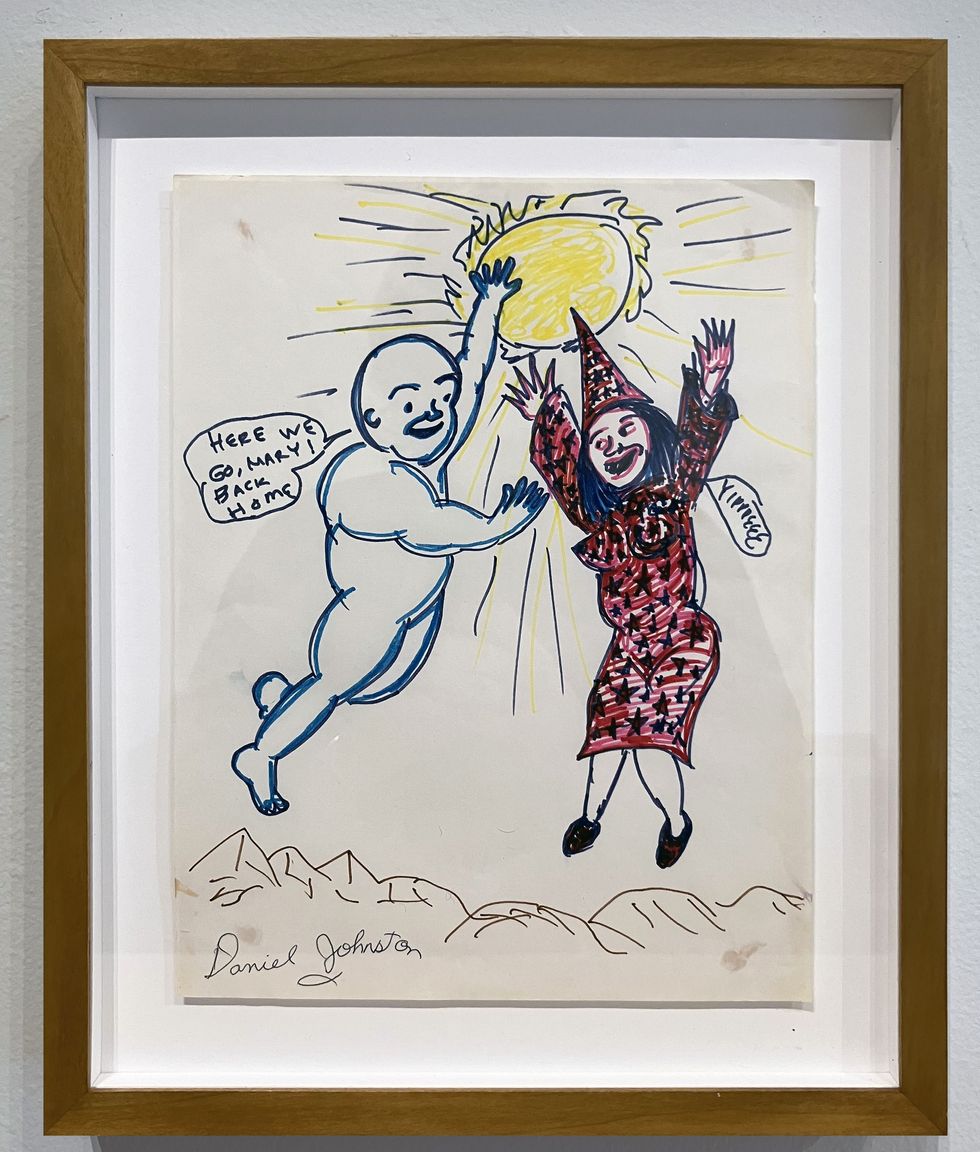
Here we go, Mary!, 1982
Ink and marker on paper 11 x 8 1/2” inches
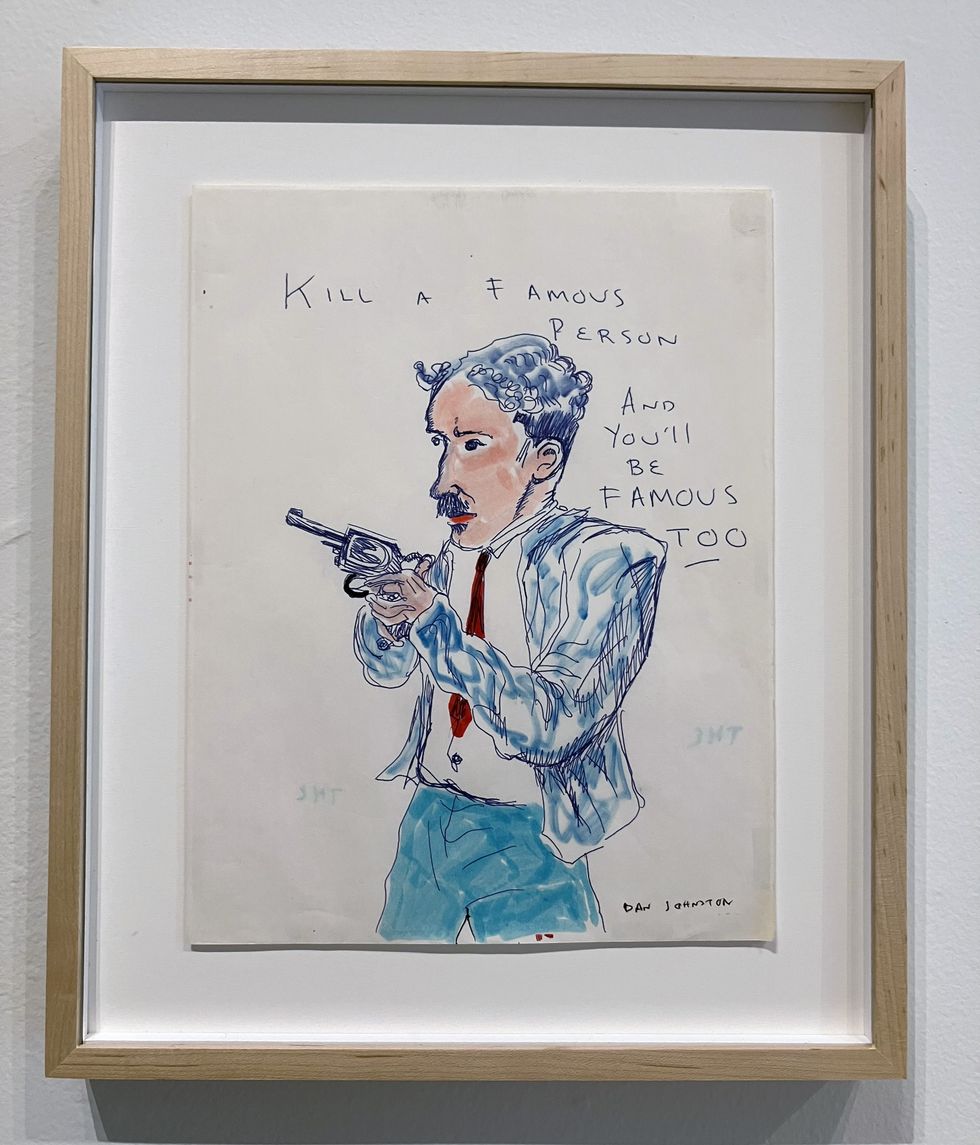
Kill a famous person, 1980
Ink and marker on paper 11 x 8 1/2” inches
Did anybody share a good anecdote that you hadn't heard before?
“A man at the opening told me that, in 2017, he put on a big art show for Daniel. The entire time, Daniel hid in the back and never came out–no one would have known he was there. He said, ‘Yeah, if Daniel was here right now, he’d be hiding in the bathroom.’”
Did Daniel’s work influence your own art practice?
“Oh absolutely. I'm really interested in this aggressive pen-to-paper style. Just seeing what comes out with no preparation. That process ties back to that unselfconsciousness of making art as a child, and it's so hard to return to that approach to art-making. Even for you with writing, all of these rules we follow truly don't matter. Maybe we’ve learned too much and it just gets in the way of producing something great.
"Now I’m curious to ask you–which one is your favorite piece?"
I really like the one that says, “Explanations are a Lie.” That one hit me because, as a writer, I’m such an over-explainer to the point of meaninglessness. Seeing that one, I felt attacked, but in a good way.
“I can absolutely relate. Even this entire conversation, trying to actually explain his work feels impossible. In spirit, Daniel Johnston is telling us, ‘Shut up.’”
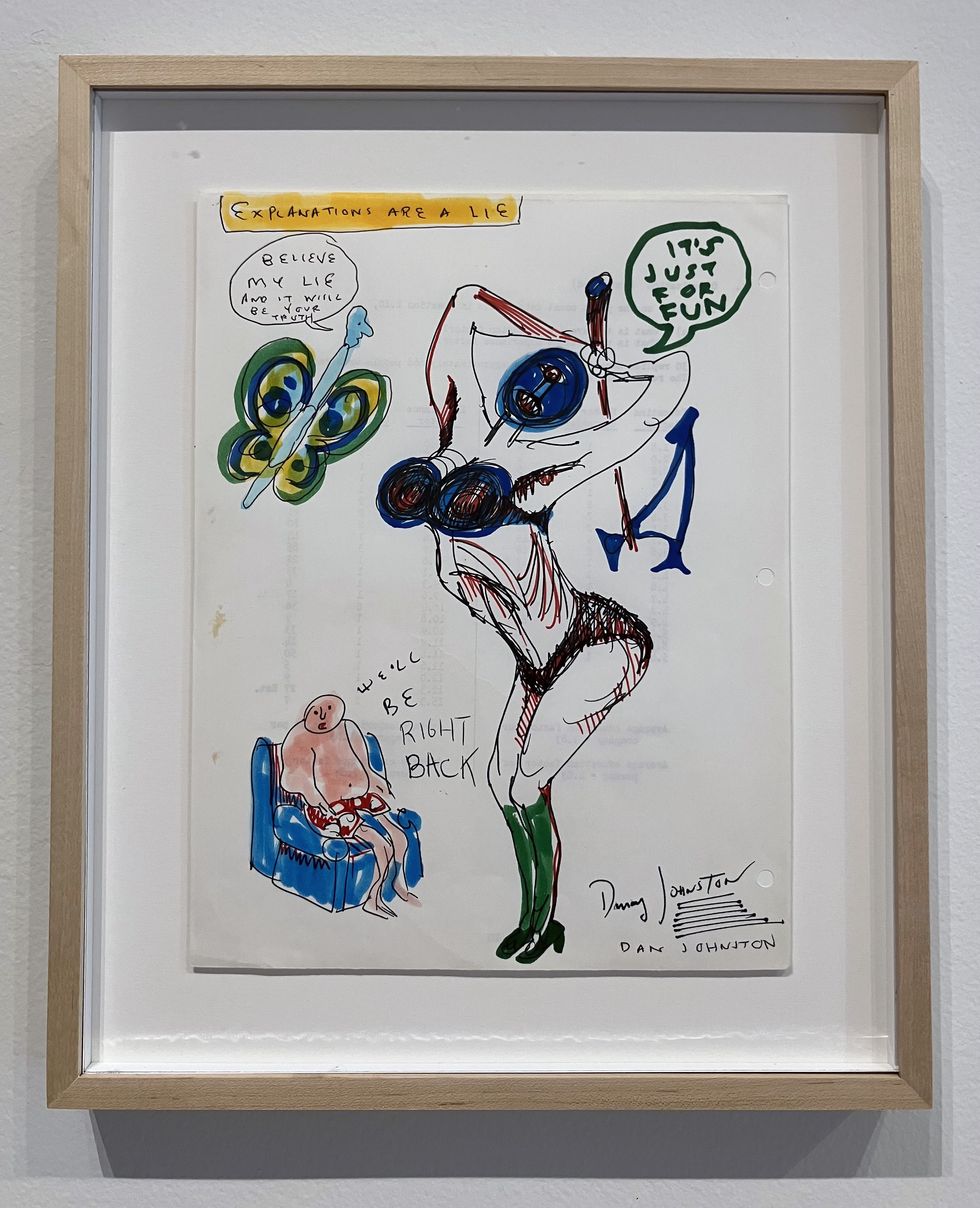
It’s just for fun, 1983
Ink and marker on paper 11 x 8 1/2” inches
des pair books is located in Echo Park, Los Angeles (Inquire for purchase of artworks)
In honor of May being Mental Health Awareness Month, explore the Hi, How Are You Project. Created with the support of Johnston and his family, Hi, How Are You Project is a resource to create awareness and an ongoing dialog about mental health in Daniel’s honor.


